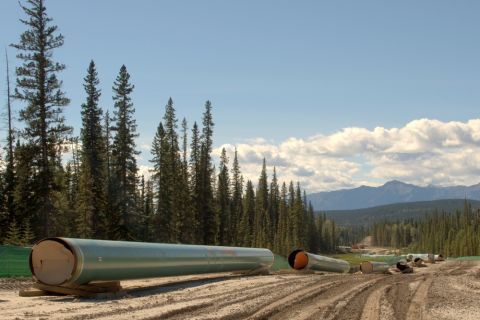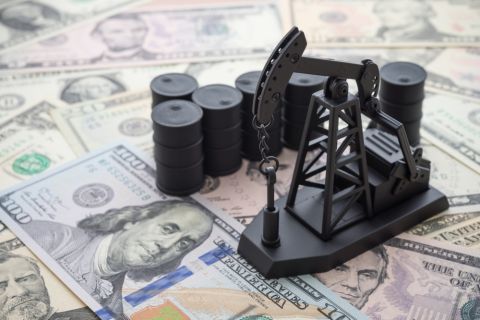
(Source: Hart Energy)
When U.S. president Donald Trump announced the assassination of Qassem Soleimani, leader of Iran’s overseas military, western markets wobbled. No wonder. Oil prices initially jumped nearly 5%.
And what any trader worth their bonus knows—and a diminishing number personally remember—is that when Middle Eastern tensions created an oil price shock in the 1970s, the consequence was American stagflation.
This experience of high inflation and unemployment coupled with stagnant demand was so unpleasant that it is usually presumed that U.S. politicians want to avoid unleashing a repeat by creating oil price rises that hit consumers at the pump, especially leading up to a presidential election.
That still hold true in some respects. Voters care deeply about the cost of filling their cars. But as investors ponder what Trump might do next in the Middle East, or how markets might respond, there is a crucial point to remember.
Today’s U.S. economy is far less vulnerable to swings in the oil price—and Middle Eastern shocks. As Robert Kaplan, president of the Federal Reserve Bank of Dallas, said after Soleimani’s death: “The effect is going to be more muted than we’ve seen historically.”
There has been a big structural shift that Trump loves to trumpet: America’s homegrown energy boom. Four months ago the country became a net oil exporter for the first time since records began in 1973, selling 89,000 barrels per day (bbl/d) more petroleum than it imported.
The change largely stems from shale oil fields, which have helped drive homegrown production up from 5m bbl/d in 2010 to 12 million last year. And while domestically-produced oil does not always substitute for imported oil, this pattern changes geopolitical dynamics.
There is a second, less-heralded factor at play: the energy intensity of American growth has been declining sharply in recent years. A striking chart compiled by Torsten Slok, a Deutsche Bank economist, illustrates the point. If you take 1973 as the baseline, Slok calculates that the amount of petroleum products consumed per unit of real gross domestic product fell 50% in the following quarter-century.
Since then, it has kept on tumbling and is now at one-third of the 1973 level. In plain English this means that one barrel of oil is now associated with three times more output than it was in 1973.
Why? Optimists might like to think (or hope) that Americans are amending their gas-guzzling ways. That is partly true—to a degree. Renewable energy currently accounts for 11% of total U.S. energy consumption and 17% of electricity generation, a level that is (still) lamentably modest but up from almost nothing two decades ago.
Meanwhile, even when businesses and consumers use fossil fuels, they are doing so more efficiently, and this seems set to accelerate. The National Research Council, an American science research non-profit, reckons that yearly energy savings in the U.S. economy will be more than 30 quads (one quadrillion British thermal units) by 2030 compared with today.
Or to illustrate this point another way: in 1980, America’s 81 million households consumed 9.3 quads of energy a year; by 2010 the number of households had risen by 45%—but only consumed 10% more quads.
However, there is another crucial issue at play that has nothing to do with green intentions: the rise of the service economy. The industrial sector uses dramatically more energy than services, even when you factor in electricity-hungry information technology centers. Industry also relies more than services on energy-guzzling transport systems.
However, manufacturing has shriveled in America, like the rest of the west: it now accounts for just 12% of nominal GDP, down from 28% in the 1960s.
Meanwhile, services grew 12 times faster than the industrial sector between 1992 and 2012. That has cut the energy intensity of American growth and left the U.S. with lower energy intensity than emerging market counties, which are less orientated to the service sector. “It’s all about services,” Slok said.
Don’t expect Trump to highlight this point: he remains more obsessed with the Rust Belt’s metal-bashing manufacturers than the sleek, low-emission data centers now springing up in Virginia or Nevada.
But here is the irony: the faster the service sector grows, unheralded or not, the less the White House needs to fear that pesky oil price. That might yet herald more—not less—instability in the Middle East.
Recommended Reading
US Gulf Coast Heavy Crude Oil Prices Firm as Supplies Tighten
2024-04-10 - Pushing up heavy crude prices are falling oil exports from Mexico, the potential for resumption of sanctions on Venezuelan crude, the imminent startup of a Canadian pipeline and continued output cuts by OPEC+.
What's Affecting Oil Prices This Week? (March 25, 2024)
2024-03-25 - On average, Stratas Advisors are forecasting that oil supply will be at a deficit of 840,000 bbl/d in 2024.
Oil Broadly Steady After Surprise US Crude Stock Drop
2024-03-21 - Stockpiles unexpectedly declined by 2 MMbbl to 445 MMbbl in the week ended March 15, as exports rose and refiners continued to increase activity.
Imperial Expects TMX to Tighten Differentials, Raise Heavy Crude Prices
2024-02-06 - Imperial Oil expects the completion of the Trans Mountain Pipeline expansion to tighten WCS and WTI light and heavy oil differentials and boost its access to more lucrative markets in 2024.
What's Affecting Oil Prices This Week? (April 8, 2024)
2024-04-08 - Stratas Advisors says geopolitics are providing a boost for oil prices as conflicts escalate–and while crude oil and oil products continue to flow, the possibility of disruption is increasing.



